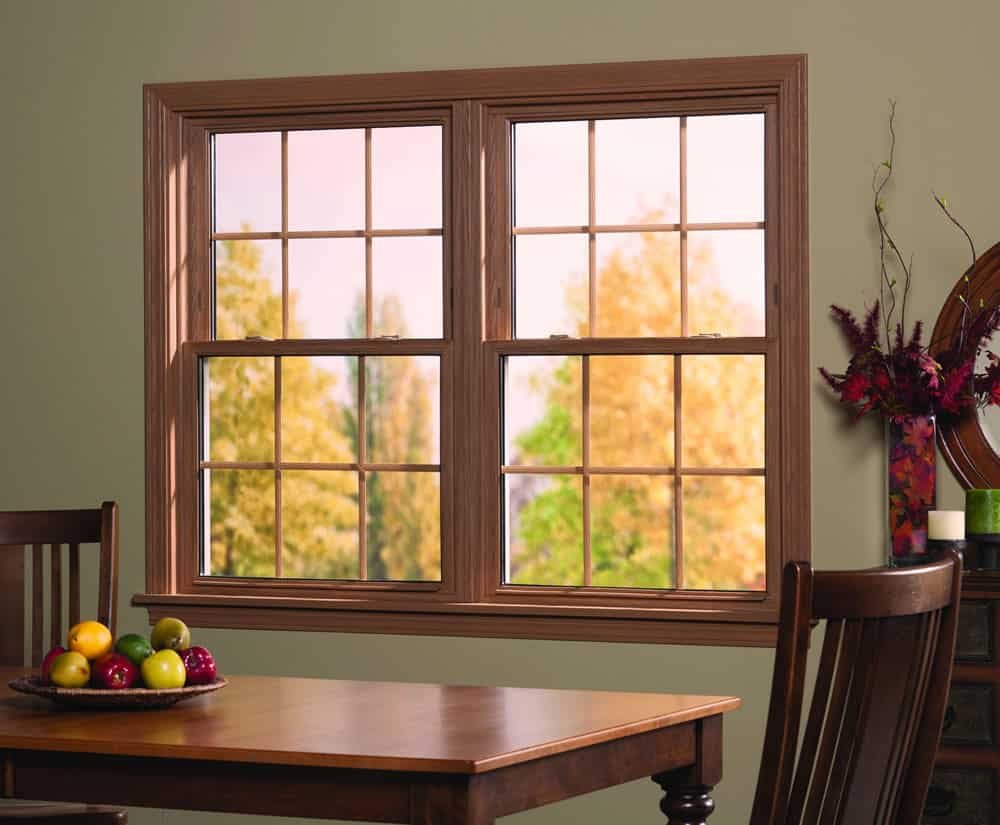When it comes to window replacement or window renovation, selecting the right window style is crucial. Not only does the style of the window affect the aesthetic appeal of your home, but it also influences energy efficiency, ventilation, and ease of maintenance. With numerous options available, from double-hung to casement, bay, and beyond, understanding the benefits and drawbacks of each style can help you make an informed decision. In this guide, we’ll explore various window styles, their unique features, and how to choose the best one for your needs.
Double-Hung Windows
What Are Double-Hung Windows?
Double-hung windows feature two sashes that slide vertically, allowing for both the top and bottom sashes to open. This design provides excellent ventilation and is a popular choice for many homeowners.
Benefits of Double-Hung Windows
- Versatility: Suitable for almost any room.
- Ventilation: Allows for maximum airflow when both sashes are open.
- Easy Cleaning: Many models tilt inwards, making cleaning the exterior from inside the house simple.
Drawbacks of Double-Hung Windows
- Air Leakage: More prone to air leakage compared to other styles, affecting energy efficiency.
- Maintenance: Requires regular maintenance to ensure smooth operation.
Casement Windows
What Are Casement Windows?
Casement windows are hinged at the side and open outward like a door, operated by a crank. They provide a clear, unobstructed view and are highly energy-efficient.
Benefits of Casement Windows
- Energy Efficiency: Excellent at sealing, minimizing air leakage.
- Ventilation: Can be opened fully to catch side breezes.
- Security: Harder to break into due to the hook-shaped lock embedded in the frame.
Drawbacks of Casement Windows
- Space Requirements: Need ample outdoor space to open fully.
- Mechanical Parts: Crank mechanisms can wear out over time.
Bay and Bow Windows
What Are Bay and Bow Windows?
Bay windows consist of three panels that protrude outward, typically with a large fixed window in the center and two smaller windows on the sides. Bow windows are similar but consist of four or more panels, creating a more curved appearance.
Benefits of Bay and Bow Windows
- Aesthetic Appeal: Adds a dramatic focal point to any room.
- Natural Light: Allows for more natural light due to the multiple panes.
- Space: Creates additional interior space, often used for seating or storage.
Drawbacks of Bay and Bow Windows
- Cost: More expensive than other window styles due to their size and complexity.
- Installation: Requires professional installation to ensure structural integrity.
Slider Windows
What Are Slider Windows?
Slider windows, or sliding windows, open horizontally along a track. They are simple in design and operation, often used in modern homes.
Benefits of Slider Windows
- Ease of Use: Easy to operate and maintain.
- View: Provides a wide, unobstructed view.
- Cost: Generally more affordable than other window styles.
Drawbacks of Slider Windows
- Air Leakage: Can be less energy-efficient due to potential gaps along the track.
- Cleaning: The tracks can accumulate dirt and debris, requiring regular cleaning.
Awning Windows
What Are Awning Windows?
Awning windows are hinged at the top and open outward, resembling an awning. They are often placed higher on walls for privacy and light.
Benefits of Awning Windows
- Weather Protection: Can remain open in the rain without letting water inside.
- Ventilation: Provides good ventilation while maintaining privacy.
- Energy Efficiency: Seals tightly when closed, reducing air leakage.
Drawbacks of Awning Windows
- Size Limitations: Typically smaller in size, not ideal for large openings.
- Obstruction: Can obstruct pathways if placed near walkways or patios.
Picture Windows
What Are Picture Windows?
Picture windows are large, fixed windows that do not open. They are designed to provide an expansive view and allow maximum light into the home.
Benefits of Picture Windows
- View: Offers an unobstructed view of the outdoors.
- Light: Maximizes natural light, brightening up any room.
- Energy Efficiency: No moving parts, providing a tight seal.
Drawbacks of Picture Windows
- Ventilation: Does not open, offering no ventilation.
- Cleaning: Can be difficult to clean, especially if placed on higher floors.
Personal Narrative: Finding the Perfect Window Style
When I decided to undertake a window renovation project, I was overwhelmed by the choices. My home, a blend of traditional and modern design, needed windows that complemented its style while enhancing functionality. After much research and consulting with professionals, I opted for a mix of double-hung windows in the bedrooms for their versatility, casement windows in the kitchen for maximum airflow, and a stunning bay window in the living room to create a cozy reading nook. This combination not only improved the aesthetics of my home but also increased energy efficiency and comfort.
Forward-Looking Analysis: Trends in Window Design
As we look to the future, the trend in window design is moving towards smart windows. These technologically advanced windows can adjust their tint based on the sun’s intensity, improving energy efficiency and comfort. Additionally, the use of sustainable materials is on the rise, reflecting the growing emphasis on eco-friendly home improvements.
Conclusion
Choosing the right window style for your home involves considering factors such as functionality, energy efficiency, and aesthetic appeal. Whether you opt for double-hung windows, casement windows, bay windows, or any other style, understanding the benefits and drawbacks of each can help you make an informed decision. By selecting windows that meet your specific needs and preferences, you can enhance your home’s comfort, energy efficiency, and overall value.


